There are many preconceived ideas about the most French of wines. Did you know that since 2015, the Hillsides, Houses and Cellars of Champagne have been listed as a UNESCO World Heritage Site?
On the occasion of the Heritage Days in September, let's untangle together the truth from the falsehoods in terms of champagne to taste this precious heritage according to the rules of the art!
“Champagne is the combination of wine and gas”
FALSE! The entire process of creating champagne is done by human hands, but nature also has its part to play.
If you follow the Mag, you know that champagne is made by fermenting grape juice. The sugar is transformed into alcohol: this step is called alcoholic fermentation. The wine is then dry and "still", that is to say it does not foam.
It is only during the second fermentation, when the wine is bottled, that the grape yeasts and sugar are naturally transformed into carbon dioxide (CO2). The wine then develops its organoleptic qualities and becomes effervescent!
To learn more about this, check out our following articles:
- Everything you need to know about making champagne!
- The assembly of champagne at Canard-Duchêne
“Champagne is made only from white grapes”

FALSE! Champagne is created from three main grape varieties, two of which, Pinot Noir and Meunier, produce black grapes with white juice .
The third being Chardonnay, a white grape variety.
Of the 4 other grape varieties considered secondary and found in Champagne, only one produces tinted grapes. Among the Pinot Gris, the Pinot Blanc, the Petit Meslier and the Arbanne, it is the first on the list, whose bunch is colored and yet produces white juice.
Moreover, concerning rosé champagne, there are two methods which give it all its flavour and its pretty colour: blending (adding red wine) and saignée (maceration of black grapes).
Find out all about it in our article What is a rosé champagne?
“You shouldn’t keep your champagne in the fridge”
TRUE! The ideal way to store champagne in the medium or long term is to keep it away from light in a cool cellar .
But, to fully appreciate it, you can store it in the bottom of your fridge (at around 10°C) a few hours before tasting it . This prevents the cork from drying out, which can alter its flavor.
We do not recommend placing your champagne in the freezer to cool it down faster, as this could damage it.
Also keep in mind that champagne is always drunk chilled, never iced!
You have the option of putting your bottle in an ice bucket half an hour before serving it .
Enjoy 100% delicious tasting with friends or family!
“Champagne should be served in a special champagne glass”

FALSE! You can do it, but it won't have the same effervescent quality.
Indeed, the wide and flared shape of the cup lets the bubbles escape too quickly, just like the aromas of the champagne . It is also less practical if you drink it standing up, be careful not to spill it!
To optimally preserve the bubbles and retain all its flavors as well as the purity of its aromas, we recommend serving the champagne in a wine glass.
You can also take the time to admire the bubbles rising up your glass.
Plus, a long glass stem prevents the champagne from getting warm in your hand!
“Champagne is only for dessert!”

FALSE! We have shared with you many recipes, from starters to desserts, that pair perfectly with champagne.
Nor is it reserved exclusively for festive meals, even if it does offer you new gastronomic pairings.
Discover fabulous food and wine pairings with our Charles VII vintages in our article Charles VII vintages: from history to gastronomy.
Now that you are fully informed about these preconceived ideas, you can now enjoy the potential of your bottle of champagne!




